Reclaiming Joy When It Feels Out of Reach
Introduction
Living with a chronic illness like Multiple Sclerosis (MS) can make joy feel like a distant memory. When you’re exhausted, in pain, or dealing with emotional burnout, happiness might seem unreachable — like a song you once knew the words to but can’t quite hum anymore.
But joy is not gone.
It’s not lost forever.
It’s just hiding — waiting for you to reclaim it in new ways.
This article is for the days when joy feels like too much to ask. For the moments when you wonder, “Will I ever feel light again?” The answer is yes — but it might come softly, quietly, and in ways you never expected.
Looking for online therapy? Click here.
🧠 Why Joy Can Feel So Far Away with MS
Joy is not just an emotion — it’s a state of openness. But MS often closes doors, both physically and emotionally:
- Fatigue limits energy to do joyful things
- Pain overshadows simple pleasures
- Depression and anxiety dull positive emotions
- Grief over lost abilities clouds the present
- Uncertainty about the future creates emotional numbness
When you're in survival mode, joy doesn’t feel like a priority — it feels like a luxury. And that’s okay.
But you deserve joy.
Even if you’re struggling.
Even if things are hard.
Even if nothing feels okay right now.
💡 What Joy Looks Like Now Might Be Different — and That’s Okay
Before MS, maybe joy looked like:
- Dancing all night
- Spontaneous travel
- Long hikes
- Laughing with friends over brunch
After MS, maybe joy now looks like:
- Sitting in the sun with a good book
- Watching birds outside your window
- Creating art with your hands
- Laughing softly at a meme
- Having one meaningful conversation
Joy doesn't have to be loud to be real.
Sometimes, it’s a whisper. A flicker. A breath.
🛑 The Myth of “Toxic Positivity”
Let’s be clear:
This is not an article about forcing yourself to “just be grateful” or slapping on a fake smile.
Toxic positivity sounds like:
- “At least it’s not worse.”
- “Everything happens for a reason.”
- “You just need to stay positive.”
That’s not joy — that’s denial.
True joy comes with your pain, not instead of it.
You can feel frustrated and hopeful.
You can cry and laugh in the same day.
You can grieve and grow.
🧭 Step 1: Redefine What Joy Means to You Now

Start here:
“What does joy look like for me, with the life I have now?”
Try not to compare it to the past or to others’ highlight reels on social media. Your joy is allowed to look different.
Maybe it's:
- A moment of relief from pain
- A small success like walking farther today
- A cozy routine that brings peace
- Feeling understood by someone
- Laughing at a silly TikTok while in bed
Write down a list of small joys that still feel possible. Keep it somewhere visible.
✍️ Step 2: Journal the Joy You’ve Already Had
Joy often slips by unnoticed. Here’s a powerful prompt:
“What are 5 joyful moments I’ve had in the past month — no matter how small?”
You might be surprised at what comes up:
- A comforting cup of tea
- A kind comment on your post
- A moment when your symptoms eased
- A funny conversation with your pet
- A memory that made you smile
Joy leaves breadcrumbs. Follow them.
🎨 Step 3: Engage Your Senses
When you're overwhelmed mentally, go back to the body. Joy is often felt through the senses.
Try:
- Touch: Soft blankets, warm baths, a hug
- Sight: Nature scenes, favorite colors, calming lights
- Sound: Music, laughter, birdsong
- Smell: Candles, essential oils, fresh sheets
- Taste: Your favorite snack, a new recipe, herbal tea
Sensory joy is immediate, grounding, and healing.
🎧 Step 4: Create a Joy Playlist (Even If You’re Crying)
Music has a direct line to emotion. Create a playlist called:
🎵 “Joy, Come Back to Me”
Include:
- Songs that make you want to move
- Songs from childhood
- Songs with empowering lyrics
- Instrumentals that soothe
Even if you cry while listening, that's okay — it means you're opening up again.
🤗 Step 5: Let People In (Even Just a Little)
Isolation is joy’s enemy. And MS often isolates — physically, emotionally, socially.
You don’t need a big social circle, but connection is key. Try:
- Texting one person a day
- Joining an MS support group (online or local)
- Talking honestly with a friend
- Asking for a small favor or check-in
Letting someone witness your journey — without fixing it — is a form of joy.
🌻 Step 6: Start a "Joy Practice"
Just like gratitude or mindfulness, joy can be a practice.
Try:
- A Joy Jar: Write down one joyful thing each day and place it in a jar
- A Joy Sketchbook: Doodle what made you smile
- A Joy Photo Album: Save pictures of joyful memories or moments
Some days, the practice might feel silly. But over time, it builds emotional muscle — a reminder that joy is possible again.
😔 What If You Feel Nothing?
Some days, you won’t feel joy.
Some days, even trying feels too hard.
That’s part of the journey too.
In those moments:
- Be gentle with yourself
- Don’t force anything
- Focus on comfort, not joy
- Say: “Right now, I’m surviving — and that’s enough.”
Remember, numbness isn’t failure. It’s often your body protecting you. Trust that joy will return when it’s safe again.
✨ Joy in the “In-Between” Moments
You don’t have to wait for a “good MS day” to feel joy.
Look for it in:
- That first sip of coffee
- The moment you crawl into bed
- The stretch of light in the afternoon
- A new episode of your favorite show
- A stranger’s smile
Joy hides in ordinary things. You don’t have to chase it — you can notice it.
🖼️ Try This: A “Joy Vision Board”

Create a digital or physical collage of:
- People who make you laugh
- Colors that bring calm
- Places that feel peaceful
- Quotes that make you feel alive
Hang it somewhere visible — a reminder that joy is not gone, just waiting to be invited back in.
💬 Real Quotes from the MS Community
“I used to think joy had to be big. Now I find it in the quiet. A good book. A friend checking in. That’s real joy.”
— Ana, 39
“Laughter is my medicine. It doesn’t cure MS, but it keeps me going.”
— James, 47
“I cried for weeks after my diagnosis. Then one day, I heard a song I loved and I sang for the first time in months. That was my turning point.”
— Layla, 29
📘 Affirmations for Reclaiming Joy
Say them out loud or write them down:
- “Joy is still available to me.”
- “I deserve moments of light.”
- “Even in struggle, I am worthy of happiness.”
- “Small joys are still real joys.”
- “My illness does not define my ability to feel joy.”
🌅 Final Thoughts: Joy Is Not a Destination — It’s a Practice
You don’t have to “fix” your life to feel joy.
You don’t have to wait for the pain to stop.
You just have to be open — even a little.
Joy doesn’t erase your struggle — it coexists with it.
It reminds you of who you are beyond the diagnosis.
It helps you come back to yourself — again and again.
So today, ask yourself gently:
“What’s one thing I can do to let a little joy in?”
Then do that.
And tomorrow, do it again.
Not because you “should” — but because you’re worth it.
Looking for online therapy? Click here.
Related Posts
-

Learning to Feel Safe in Your Body Again
If your body no longer feels like a safe place—due to trauma, chronic illness, or anxiety—you’re not alone. This guide offers gentle, body-based strategies to help you reconnect with yourself, regulate your nervous system, and rebuild trust in your physical experience.
-

When You Feel Emotionally Unlovable: Challenging the Lie
Feeling unlovable because of your emotions, illness, or sensitivity? You’re not broken—you’re healing. Learn how to challenge the lie of emotional unworthiness and rebuild self-trust, one compassionate step at a time.
-

Brain Fog and Fatigue: How to Stop Blaming Yourself
Struggling with brain fog or chronic fatigue? You’re not lazy or failing. Learn how to stop blaming yourself for symptoms caused by MS or chronic illness, and start embracing a more compassionate path to healing and self-understanding.
-

Creating an Emotional Support Team You Actually Trust
Tired of feeling unsupported or misunderstood? Learn how to build an emotional support team you actually trust—with people who see you, hold space for you, and respect your boundaries, especially when living with MS or chronic illness.
-

MS, Vulnerability, and the Fear of Being Seen
Living with MS can make vulnerability feel unsafe. Learn why so many people with MS hide their struggles—and how to gently move toward authenticity, self-acceptance, and deeper connection without shame.
-
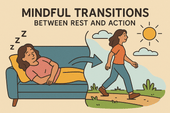
Mindful Transitions Between Rest and Action
Struggling to shift between rest and activity without guilt or overwhelm? This guide offers gentle, mindful strategies to make transitions feel more natural, intentional, and supportive of your nervous system.
-
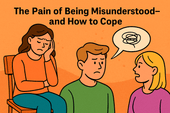
The Pain of Being Misunderstood—And How to Cope
Feeling the sting of being misunderstood? Learn why it hurts so deeply and discover practical, healing strategies to protect your truth, communicate clearly, and rebuild emotional safety when others just don’t get it.
-
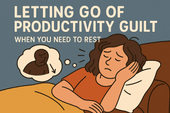
Letting Go of Productivity Guilt When You Need to Rest
Struggling with guilt every time you try to rest? Learn how to release productivity shame, understand why rest matters, and embrace a more compassionate rhythm for healing and recovery—without feeling lazy.
-

Rebuilding Energy Reserves Without Shame
-

What to Do If You Feel Emotionally Invalidated by Doctors
Feeling emotionally invalidated by your doctor can be deeply distressing. Learn how to recognize medical gaslighting, validate your own experience, and advocate for better care when you’re not being heard.
-

How to Rest Without Feeling Lazy
Rest isn’t laziness—it’s a necessary act of self-respect. Learn how to shift your mindset, let go of guilt, and embrace rest as a vital part of mental and physical well-being.
-

Redefining Energy Management as Emotional Self-Care
Energy isn’t just physical—it’s emotional. Learn how redefining energy management as emotional self-care can help you protect your peace, support your nervous system, and live more in tune with your true needs.
-
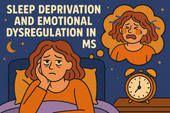
Sleep Deprivation and Emotional Dysregulation in MS
-
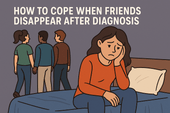
How to Cope When Friends Disappear After Diagnosis
Losing friends after a diagnosis can feel like another kind of grief. Discover why some friends disappear—and how to cope with the emotional fallout while building more supportive relationships.
-
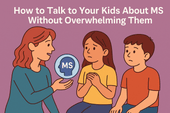
How to Talk to Your Kids About MS Without Overwhelming Them
Struggling with how to explain MS to your kids? Learn how to talk to children of all ages about multiple sclerosis with honesty, clarity, and emotional safety—without overwhelming them.
-

MS and the Fear of Emotional Abandonment
The fear of emotional abandonment is common for people with MS. This article explores why it happens, how it impacts your relationships, and how to create emotional safety and healing.
-

Forgiveness, Closure, and Letting Go of the Past with MS
Living with MS often brings emotional wounds from the past. Learn how forgiveness, closure, and letting go can help you heal emotionally—and reclaim peace in the present.
-
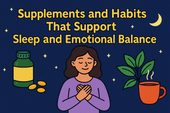
Supplements and Habits That Support Sleep and Emotional Balance
Struggling with poor sleep and emotional ups and downs? Discover calming supplements and daily habits that support deep rest and mental well-being—backed by science and easy to implement.
-

When Insomnia Feels Like Your MS Brain Won’t Turn Off
Struggling to sleep with MS? When your brain won’t shut off at night, insomnia feels relentless. Learn what causes it—and discover science-backed strategies to calm your mind and finally rest.
-

The Emotional Toll of Waking Up Tired Every Day: Why It Hurts More Than You Think
Waking up tired every day takes a deep emotional toll—from mood swings to lost motivation and self-doubt. Learn why chronic fatigue hurts more than you think and how to gently reclaim your mornings.
-
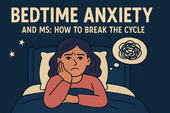
Bedtime Anxiety and MS: How to Break the Cycle
Bedtime anxiety is a common struggle for people with MS—and it’s more than just racing thoughts. Learn how MS-related stress, nervous system dysregulation, and fear of symptoms can create a cycle of sleeplessness, and discover practical, calming strategies to finally reclaim restful nights.
-

How Mental Health Affects Sleep Quality in MS: Breaking the Cycle of Fatigue and Emotional Distress
Struggling to sleep when you have MS? Discover how anxiety, depression, and neurological changes impact your rest—and what you can do to reclaim it. From CBT-I and calming supplements to lifestyle tips that support both mental health and sleep, this guide offers practical strategies for better nights.
-

Learning to Love Your Life (Even When It’s Not What You Expected)
Your life may not look how you imagined—but it’s still worth loving. Learn how to find peace, purpose, and joy in the unexpected.
-

Tips for Managing Depressive Thoughts Without Judgment
Learn how to meet depressive thoughts with compassion, not shame. These gentle, research-backed tools help you manage low moods without self-judgment.
-

Rewiring Hope: How to Slowly Come Back to Life
Feeling emotionally numb or disconnected? Learn how to gently rebuild hope, one small sensory step and spark of life at a time.
-

Depression and Suicidality in MS: A Conversation That Needs to Happen
Depression and suicidality in MS are real—and urgent. Learn why we must talk about it, how to spot warning signs, and where to find help and hope.
-

Finding Meaning When Life Feels Empty
Feeling disconnected or numb? Discover gentle ways to find meaning again—even in emptiness—through daily rituals, reflection, and purpose.
-
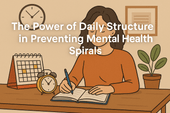
The Power of Daily Structure in Preventing Mental Health Spirals
Daily structure can prevent mental health spirals by creating safety, routine, and self-trust—especially for those with MS, depression, or anxiety.
-

Healing from Emotional Flatness with Sensory Rituals
Feeling emotionally numb or disconnected? Discover how sensory rituals can gently restore pleasure, presence, and emotional resilience.
-

The Role of Light Therapy for Seasonal Depression and MS
Can light therapy ease seasonal depression in people with MS? Discover the science, benefits, and how to use it safely for better mood and energy.
-

Medication vs Therapy: Treating MS-Related Depression Effectively
Explore whether therapy, medication, or both are best for treating MS-related depression. Understand what works, when—and why combination care is often ideal.
-

How to Support a Partner with MS and Depression
Learn how to support a partner living with MS and depression—practical tips, emotional tools, and ways to protect your own mental health too.
-

The Emotional Cost of Losing Your Old Life
Losing your old life to MS isn’t just about physical symptoms—it’s about grieving the identity, dreams, and freedom you once had. This article explores the emotional toll of invisible grief and how to begin healing without denying the pain.
-

MS, Depression, and Hormones: What You Should Know
MS-related depression isn’t always just emotional—it can be hormonal. Discover how thyroid, sex, and stress hormones influence mood in MS, why women may feel worse during PMS or menopause, and what signs to look for when hormones may be driving emotional instability.
-

MS and Anhedonia: Reclaiming Pleasure One Step at a Time
Anhedonia—feeling emotionally flat or disconnected—is a common but misunderstood symptom of MS depression. This article explores how neuroinflammation, dopamine disruption, and fatigue can dull your sense of joy—and how small, gentle steps can help you begin to feel again.
-
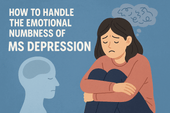
How to Handle the Emotional Numbness of MS Depression
Emotional numbness in MS depression doesn’t always look like sadness—it can feel like nothing at all. Learn why this disconnection happens, how it's tied to neuroinflammation and nervous system overload, and discover science-backed strategies to gently reconnect with your emotions.
-

How Inflammation Can Affect Mood in MS
Mood swings and emotional numbness in MS aren’t just psychological—they can be driven by immune system inflammation. This article explores how inflammatory cytokines affect the brain, why mood changes are often biological, and what you can do to calm your nervous system from the inside out.
-

Recognizing Depression in MS: It's Not Just Sadness
Depression in multiple sclerosis (MS) is more than just sadness—it can be a neurological symptom, a side effect of inflammation, or a silent weight that masks itself as fatigue or emotional numbness. This article helps you recognize the hidden signs of MS-related depression, understand the science behind it, and explore real treatment options that support both mental and physical health.
-

Is Cryotherapy Safe for MS? Pros, Cons, and How It Compares to Cold Plunges
Cryotherapy promises quick recovery, inflammation reduction, and mood support—but is it safe for people with MS? This article breaks down the science, risks, and real-life benefits of cryotherapy for multiple sclerosis. You’ll also learn how it compares to cold plunges and which option may be better for calming flares and regulating your nervous system.
-

Can Cold Plunges Help Reduce Inflammatory Flares in MS?
Flares in multiple sclerosis (MS) are often driven by inflammation—but what if cold water could help turn down the heat? This in-depth article explores how cold plunges may help reduce flare frequency and intensity in MS by calming the immune system, lowering pro-inflammatory cytokines, and regulating the nervous system. Learn how to safely use cold exposure as part of your MS recovery routine.
-

How Cold Exposure May Help Regulate MS-Related Mood Swings
Mood swings are a common but overlooked challenge in multiple sclerosis (MS). This article explores how cold exposure—like cold plunges and showers—may help regulate emotional ups and downs by calming the nervous system, reducing inflammation, and boosting mood-enhancing chemicals. Learn how to use this natural tool safely to support your mental and emotional resilience with MS.
-

MS Fatigue Toolkit: Why Cold Plunges Deserve a Spot in Your Daily Routine
Fatigue is one of the most debilitating symptoms of multiple sclerosis (MS)—often invisible, misunderstood, and overwhelming. While no single tool can eliminate it, building a personalized fatigue management toolkit can make life more manageable. One surprising contender? Cold plunges. In this article, we explore why cold water immersion might be the refresh button your nervous system needs—and how to safely make it part of your MS fatigue routine.
-

Cold Therapy vs. Heat Therapy for MS: Which One Helps More?
Managing multiple sclerosis (MS) often means navigating symptoms like fatigue, spasticity, pain, and nerve dysfunction. But when it comes to using temperature-based therapies, there’s a question many patients face: Should I be using cold or heat? In this in-depth guide, we explore the benefits, risks, and best use cases of cold therapy vs. heat therapy for MS.
-

From the Tub to the Brain: How Cold Plunges Might Support Cognitive Clarity in MS
Cognitive fog is one of the most frustrating symptoms of multiple sclerosis (MS). But could cold plunges—those bracing dips into icy water—offer a surprising path to mental clarity? This article explores the emerging science behind cold exposure, brain function, and how a cold tub might help people with MS sharpen focus, lift brain fog, and reset their nervous system.
-

Why MS Patients Are Turning to Cold Plunges for Relief and Resilience
Cold plunges are no longer just for elite athletes and wellness influencers. A growing number of people with multiple sclerosis (MS) are turning to cold water immersion to ease symptoms, build nervous system resilience, and find calm in the chaos of chronic illness. This article explores why—and how—you might want to give it a try.
-

Cold Plunge Therapy: A Hidden Gem for People with MS?
Cold plunge therapy—once the domain of elite athletes and biohackers—is gaining attention among people with multiple sclerosis (MS). Could it help reduce inflammation, calm the nervous system, and ease MS symptoms like fatigue and spasticity? In this article, we dive deep into the science, benefits, safety, and practical application of cold plunges for MS recovery and symptom relief.
-
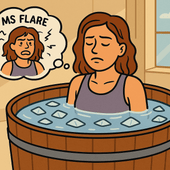
Finding Relief in the Midst of a Flare
MS flares can leave you feeling overwhelmed, exhausted, and mentally foggy. Cold water therapy is emerging as a promising tool to help reset the body and mind after a flare. This article explores how cold exposure supports recovery, calms the nervous system, and can be safely added to your daily routine.
-

How Cold Exposure May Help Regulate MS-Related Mood Swings
Mood swings in multiple sclerosis (MS) can feel like emotional whiplash—one moment calm, the next overwhelmed, angry, or hopeless. While medications and therapy help, many people with MS are exploring natural strategies to support emotional balance. One surprising tool gaining attention? Cold exposure. In this article, we explore how cold plunges and other forms of cold therapy may regulate the nervous system, stabilize mood, and offer emotional relief for people with MS.
-

How to Build an At-Home MS Recovery Corner (with Cold Plunge Setup)
Create your personal MS recovery oasis at home—complete with a cold plunge setup. Learn how to design a space that supports healing, reduces inflammation, and helps you manage symptoms naturally.
-

The Role of Temperature Regulation in MS: Why Cooling Matters


















































